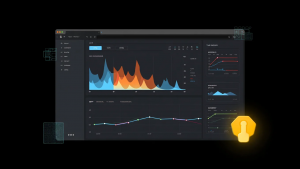Is the Cloud Killing IT Jobs?
![]() One thing that is almost certain in this world – change. Everything and everybody goes through multiple changes, and the job market is not immune to this. When computers hit the workplace, people complained about how machines would replace workers. Job loss did occur, but computers also made individuals more productive and created even more opportunities and job roles. Now, the department that computers gave birth to is now experiencing a change.
One thing that is almost certain in this world – change. Everything and everybody goes through multiple changes, and the job market is not immune to this. When computers hit the workplace, people complained about how machines would replace workers. Job loss did occur, but computers also made individuals more productive and created even more opportunities and job roles. Now, the department that computers gave birth to is now experiencing a change.
Since computers have became a common fixture of the workplace, almost all companies have created in-house IT team. Some have full IT staffs that maintain servers, networks, and equipment as well as provide support to the entire company; for others it’s just one or two people. In general, the size of the company drives the size and complexity of IT. That was before (queue evil music) the cloud. Adoption of cloud computing is growing and many are fearful it will eliminate entire swaths of IT jobs. Is the cloud the end of in house IT or is it just fear mongering?
Not everyone agrees the cloud is bad for jobs. In fact, some in the IT field don’t even see the cloud as new. They consider it a marketing label for internet and sharing systems that have existed for decades. There is some truth to this perspective. Even before the cloud, IT services were available on a contract basis. Cloud services work similarly in that the companies paying for services and they are delivered via some remote, external entity.
With this model, companies had to decide if they wanted to use a public resource for their private data and applications. This is the same decisions organizations must make regarding the public cloud. If the answer was no, companies turned to vendors that maintained their services on site and could offer more security and control of their data – just like the private cloud. In both both the private and public scenario – these solutions do run themselves. Who would maintains it? A new breed of IT professionals created by the model in the same way that the introduction of computers created new staffing needs.
The market will continue evolving, but that doesn’t always mean displacing workers. Sometimes it means entirely new positions. In other cases, it means employees should learn new skills, adapt and incorporate the new demands into their current role. They can learn the needed skills to continue working in an IT world that includes the cloud. The data for IT roles in the Bureau of Labor Statistics’ Occupational Outlook Handbook , do not show a decline in the need for IT workers. Overall, it shows an average increase, some roles even have faster than average growth projected. The cloud, like computers, does not mean the death of an occupation. It optimizes technology delivery and can increase productivity in ways that make entirely new operating models possible. The cloud does not spell job loss, but new opportunities, role changes and growth for the IT professionals that want to grow and evolve.
A message from John Furrier, co-founder of SiliconANGLE:
Your vote of support is important to us and it helps us keep the content FREE.
One click below supports our mission to provide free, deep, and relevant content.
Join our community on YouTube
Join the community that includes more than 15,000 #CubeAlumni experts, including Amazon.com CEO Andy Jassy, Dell Technologies founder and CEO Michael Dell, Intel CEO Pat Gelsinger, and many more luminaries and experts.
THANK YOU















